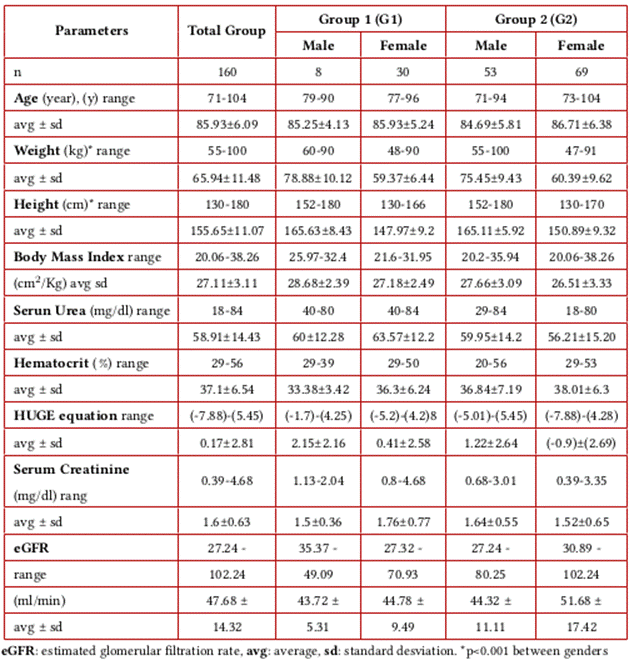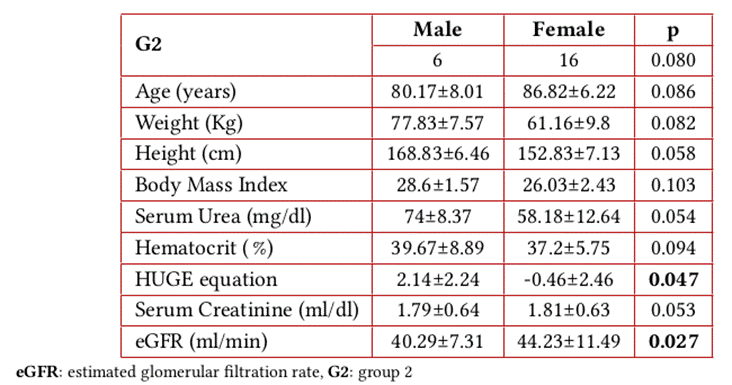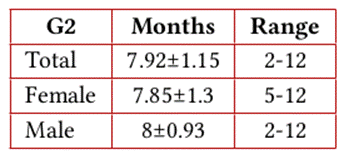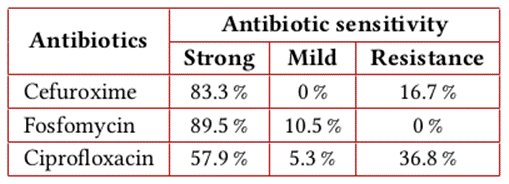Introduction
Uncomplicated cystitis (UC) is the most prevalent urinary tract infection (UTI), usually manifested as a symptomatic cystitis with neither fever nor general discomfort, and affecting mainly women and elderly men1.There are several risk factors which can be associated, isolated or combined, to UC such as the lack of physical activity, history of recurrent cystitis (>3-4 per year), sedentary lifestyle, urinary retention, insufficient water ingestion, obesity, hypotonic pelvic floor, and prostatitis. Besides, sexual activity and menopausal female genital tract changes may be UC triggering factors. Finally, there are also unknown UC determinants, as is the case of predisposing genetics factors1,2.
The diagnosis of UTI refers to the presence of clinical signs and symptoms arising from the genitourinary tract plus the presence of one or more microorganisms in the urine exceeding a significant threshold value, usually being the Escherichia coli (Ec) the most frequent UTI causative pathogen2. Regarding UTI treatment, antibiotic is the conventional therapy, which has been reported to be effective in more than 90 % of the cases. However, the prevalence rate of antibiotic resistance to uropathogens is significantly increased3-6. Moreover, recent studies have indicate that Ec showed an antibiotic resistance higher than 50 % against to the most common antibiotics prescribed (e.g: ciprofloxacin, fosfomycin or trimethoprim/sulfamethoxazole) to treat UTI. In these cases, a different sort of antibiotics is needed to successfully treat UC, increasing concomitantly the risk of developing new resistant strains. Antibiotic resistance, which has traditionally been a problem only in nosocomial complicated UTI, is currently becoming a major risk in uncomplicated community acquired UTIs7. Therefore, UC treatment should be a serious concern, and prudent use of antibiotics is increasingly important. In this sense, alternative treatments in order to relief UC symptoms, prevent UC recurrence and decrease bacterial resistance are being investigated.
Cranberry is the fruit of Vaccinium macrocarpon Aiton, which contains proanthocyanidins (PACs) as its main components. Cranberry products may offer an alternative therapy to antibiotic treatment, and PACs are the main component responsible for its medical property. There is a study which evaluated the use of a cranberry extract to prevent cystitis in premenopausal women in comparison to trimethoprim-sulphametoxazol (TS) combination8. This study documented that the TS treatment efficacy was slightly superior (78 %) to cranberry extract treatment (71 %) to treat UC. In addition, despite the cranberry treatment was as safe as TS treatment, TS prophylactic use induced higher bacterial resistance, since after one month of TS treatment the isolated TS-resistant Ec was 90 %, in comparison to 28 % in the cranberry group8. Cranberry treatment has been associated with the inhibition of bacterial adherence to uroepithelial cells. Cranberry extracts have been widely used to prevent recurrent cystitis although there is controversy about its efficacy on long-term treatments9-16. Data from different clinical studies are not always considered conclusive. Since it has been documented that cranberry anti-adhesive property is related to its PACs concentration, a higher cranberry PACs content should induce a better ITU preventative effect17,18.
The PAC decreases the Ec adhesion to the inner urinary bladder wall allowing the bacteria to be discharged through urination and reducing further infection. Until now, only cranberry has demonstrated to have this property. Therefore, it is documented that the PACs content in cranberry determines its effectiveness in a dose-dependent manner. Different studies have shown that cranberry induced Ec adherence inhibition depend on its PACs concentration19-21. However, it has been reported a lack of therapeutic efficacy in some preparations of cranberry juice, phenomenon which has been attributed to their possible low PAC concentration22. Unfortunately, no scientifically comparisons between different cranberry extracts and their PAC levels have been described yet. In this sense, the last Cochrane revision regarding cranberry use in UTI therapy has highlighted the need of quantified preparations using standardized methods to ensure the PAC potency and content.
Cysticlean® (CYS) is a cranberry extract which contains 240 mg PACs per capsule. CYS is a medical device class II A in the European Union and it is recommended for the UTI prevention and treatment. Several in vitro and ex vivo studies have shown its anti-adhesion activity is the highest known in the market: up to 90 % compared to control, and its effect is dose dependent. Previous CYS published clinical studies have been performed in more than 500 patients including, children, adults and post-coital Ec infections22-26.
Since elderly people is one of the populations mostly exposed to UC and bacteria antibiotic resistance, it was decided to originally perform an observational clinical trial in order to evaluate the efficacy and safety of a cranberry dosed extract (CYS), that is to say a cranberry product with a documented high PAC concentration and anti-adhesion activity, to treat recurrent cystitis instead of antibiotic, in elderly individuals.
Material & Methods
It was studied 160 ambulatory and nursing home patients suffering from recurrent cystitis, aged 71-104 years (85.9±6) during a follow up period of 1-12 months. Out of these patients, 61 were men, aged 71-98 years old (85.1±6.1), and 99 were women, aged 73-104 (86.5±6.2). Cystitis was defined as a positive urinary-culture, plus 2 or more signs/symptoms such as: dysuria, polakiuria, leucocyturia, pyuria, haematuria, nycturia, urinary urgency (micturition emergency) dysuria and itching. The patients were divided into two groups according to their UI antecedents before the study: Group 1 (G1) included patients whose first episode of cystitis was recorded within the last 3 months before the study initiation. These patients were treated with 1 capsule of CYS every 12 hours for one month; while Group 2 (G2), included patients with frequent recurrent episodes of cystitis (1- 2/month or more) within the last 3 months before the study initiation. These patients were treated with 1 capsule of CYS every 12 h for up to 12 months (Table 1). After enrollment, all patients (G1 and G2) were treated with 1 capsule of CYS (240 mg PAC/capsule) every 12 hours (morning and evening). G1 patients were visited 2 weeks after treatment was started and follow up was ended 1 month after the 1st visit, when a urine culture was performed. Regarding G2, patients were evaluated regularly and a monthly urine culture was performed in asymptomatic patients in order to evaluate if the treatment could be stopped for up to 12 months. When any patient did not solve his/her cystitis because he/she was symptomatic beyond 48 hours or urine culture persisted positive beyond 12 months of treatment, then CYS was stopped and standard cystitis antibiotic treatment was prescribed. The duration of the study was 15 months starting October 2016 until December 2017. The patient´s weight (W), height (H), body mass index (BMI), estimated glomerular filtration rate (eGFR), serum creatinine (Cr), serum urea (U), hematocrit (Ht) and HUGE equation were evaluated. HUGE is a validated equation for screening chronic nephropathy in elderly people, and eGFR was calculated by applying Gregori-Macias equation27,28. Inclusion criteria were: E. coli cystitis diagnoses, age ≥70 years old.
Exclusion criteria were: to be on warfarin treatment, and known allergy to cranberries. All CYS treatment was started following 2 weeks of all antibiotic treatments clean out (Table 2).
A written informed consent was obtained from all patients involved in the study. This study was carried out in accordance with the Helsinki Declaration (2000) of the World Medical Association and was performed in accordance with the principles of Good Clinical Practice.
Statistical analyses were performed using PASW Statistic 18 (SPSS) (2009, IBM Company, Chicago, Illinois). Standard descriptive statistics were used (mean ± standard deviation, max, min, and n) for continuous measurements. Comparative evaluation (t test) were performed for comparison; p-value of <005 was considered statistically significant.
Results
Both studied groups had normal distribution. No side effects/adverse reactions were reported during this study. CYS was very well accepted by all the enrolled patients.There was no significant difference neither among most of the evaluated variables (age, gender, BMI, eGFR, Cr, U, Ht, HUGE), nor in the cystitis signs and symptoms (nycturia, polakyuria, itching, leucocyturia, haematuria, urination emergency, and dysuria) between the studied groups. Conversely, weight and height were significantly different between men and women, being higher in the former gender in both groups (Table 1).
The G1 included 38 patients: 8 men aged 79-90 years old (85.3±4.1), and 30 women aged 77-96 years old (85.9±5.2), and G2 included 122 patients: 53 men, aged 71-94 years old (84.7±5.8) and 69 women, aged 73-104 years old (86.7±6.4). In G1, 31 patients were successfully treated with CYS only for 1 month according to the study plan. Only 7 patients (1 male) did not solve their cystitis and required to be passed to conventional antibiotic treatment. In G2, 120 patients were successfully treated with CYS for a period ranging between 2-12 months. Only 22 patients (6 males) did not solve their cystitis and required to be passed to conventional antibiotic treatment. This represents a success of the cranberry-based cystitis treatment of 81.57 % and 81.96 % in G1 and G2 patients,
respectively. Besides, there were no significant differences in the therapeutic results between the studied groups (Table 3).
In the G2, non responders to cranberry-based cystitis treatment, significant differences were found between males (6) and females 16) in their eGFR (p=0.027) and HUGE equation value (p=0.04), being both variables suggestive of significantly lower renal function in the male group (Table 4).
The average treatment period for patients included in the G2 was almost 8 months (range 2-12 months), and no significant differences were found between males and females (Table 5).
With regards to the documented bacteria in the urine culture, the more frequently found were Ec (90 %), Proteus sputum (5 %), and Enterococus spp (5 %). Regarding the EC, ts documented antibiotic sensitivity was as follows: cefuroxime (83.3 % sensitive, 16.7 % resistant), fosfomycin (89.5 % intermediate, 10.5 % sensitive, and 0 % resistant), ciprofloxacin (57.9 % sensitive, 5.3 % intermediate, and 36.8 % resistant), nitrofurantoin (89.5 % sensitive, and 10.5 % resistant), amoxicillin clavulanic (100 % sensitive) (Table 6).
Discussion
The most important finding of this study was that 81.6 % of the Group 1 patients and 81.9 % of the Group 2 patients were free of cystitis secondary to Ec following the course of treatment with CYS during the observational period. Another interesting finding was that both, female gender and chronic renal disease patients (patients with higher serum creatinine, positive HUGE equation, and lower GFR values), were the major cystitis risk factor found, instead of the classical ones, such as poor physical activity, sedentary, prostate hyperplasia and loss of muscle tone of the pelvic floor.
Cystitis is usually treated in daily clinical practice with antibiotics, but paradoxically this therapy becomes an important contributing factor to antibiotic resistance. This study shows the efficacy and safety of a cranberry dosed extract (CYS) with a high anti-adhesion activity to treat recurrent cystitis in elderly patients over 70 years old. No antibiotics were prescribed during this study apart from those patients who suffered from urinary re-infection, and these patients were withdrawn from the study. The anti-adhesion activity of CYS is higher than 80 % according to the data already documented and published20,29. There are many different published clinical trials which used cranberry extracts to prevent and treat cystitis, but their results were not conclusive. In fact, the efficacy of cranberry extracts to prevent and treat cystitis is related to its anti-adhesion activity and there are few cranberry anti-adhesion activity studies published. Furthermore, anti-adhesion activity is related to its PAC contents, although there is not a standard worldwide accepted method to verify cranberry PAC concentration. This means that a declared high PAC concentration does not always guarantee a high anti-adhesion activity. Moreover, there are several different administration forms: capsules, tablets, liquids, that make more difficult to standardize the real anti-adhesion activity of each presentation once ingested. PAC from Vaccinium macrocarpon are the only one PAC with this anti-adhesion capacity that blocks the adhesion of Ec to the inner urinary bladder wall, thus avoiding the urinary infection, since no adhesion means no infection. It is a cranberry exclusive activity and no other fruits have demonstrated this effect, aside from D-mannose29 Furthermore, cranberry does not produce bacterial resistance as antibiotics do and, according to the results found in this study, have a very low incidence of relapse comparing to the antibiotics used to treat cystits.
This study documented that CYS could be an alternative to the antibiotic treatments of Ec cystitis. Previous clinical studies have documented its efficacy to treat and prevent cystitis in children with congenital urinary tract defects, young women (<65 years old), and post-coital infections. This is the first study which documented CYS efficacy in older people (>70 years old).
Conclusion
Cranberry dosed extract (CYS) showed to be an effective alternative therapy to antibiotics to treat and prevent cystitis recurrences caused by Escherichia coli. Neither side effects nor adverse reactions have been reported and Cysticlean® could help to reduce the growing problem of antibiotic resistance.
Compliance with ethical standards
All procedures performed in studies involving human participants were in accordance with the ethical standards of the institutional and/or national research committee and with the 1964 Helsinki Declaration and its later amendments or comparable ethical standards. Informed consent: Informed consent was obtained from the patient.





















